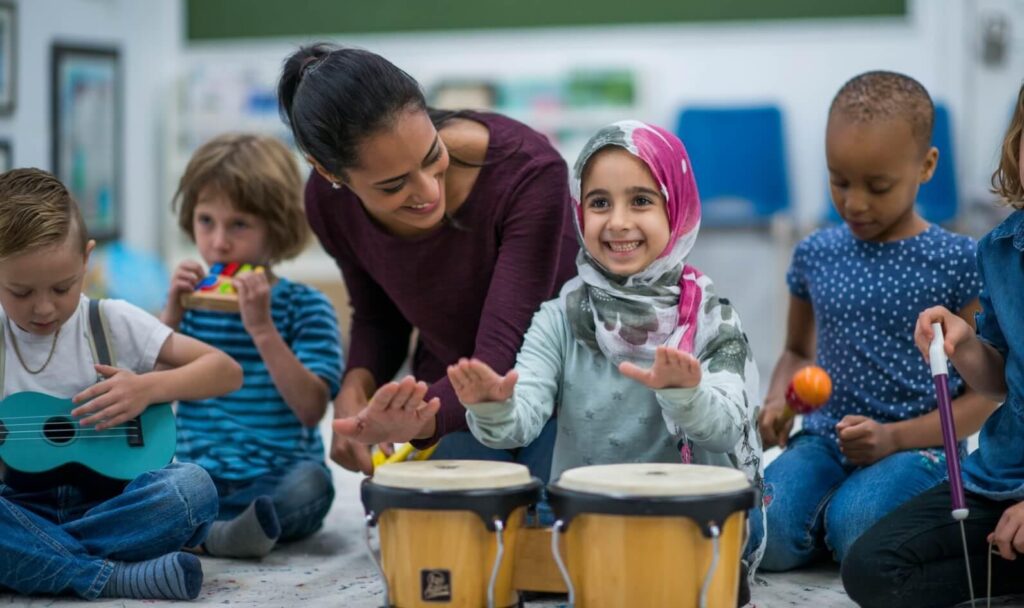Title: Shaping Tomorrow’s Harmony: An In-Depth Look at Music Education in Wuhan’s Primary Schools
As the school day begins across Wuhan, the lively sounds of children echo through hallways, yet beneath this vibrant atmosphere lies a quieter narrative—one centered on music education. This essential facet of childhood growth faces unique challenges and promising prospects within this dynamic city, once at the heart of a global health crisis. This article offers an insightful examination of music education in Wuhan’s primary schools by highlighting firsthand experiences from passionate music teachers. Through their perspectives, we explore not only current conditions but also how cultural transformations, educational reforms, and pandemic repercussions continue to shape the musical journey for young learners. Join us as we uncover how Wuhan is nurturing creativity and expression through evolving music programs that will influence generations to come.
Obstacles Confronting Music Educators in Wuhan’s Primary Education
Music educators working in Wuhan’s primary schools encounter numerous difficulties that hinder their mission to cultivate musical talent among children. A predominant issue is the scarcity of resources, which includes limited availability of instruments and insufficient teaching aids. Many classrooms lack fundamental tools such as printed scores, audio equipment, or even adequate space designed for interactive musical activities. These deficiencies directly affect student enthusiasm and diminish the overall quality of music instruction.
Compounding these material shortages is a curriculum heavily weighted toward core academic subjects like mathematics and language arts, often relegating music lessons to minimal time slots or optional status. Consequently, students receive less exposure to this critical creative outlet during formative years.
Another pressing challenge involves professional development gaps. While many instructors bring passion into their roles, they frequently have limited access to specialized training tailored specifically for primary-level music education methodologies. This shortfall can result in reliance on traditional or outdated pedagogical approaches that may fail to engage today’s digitally native youth effectively.
The need for stronger collaboration between teachers, families, and community organizations remains unmet as well; fostering such partnerships could create more supportive environments conducive to artistic growth but currently remains underdeveloped despite growing recognition within schools about music’s importance.
Progressive Strategies Revitalizing Music Learning and Student Engagement
The evolving landscape calls for inventive methods aimed at enriching both curriculum content and student involvement in Wuhan’s primary school music programs. Educators are adopting diverse approaches designed not only to spark interest but also deepen comprehension of musical principles:
- Experiential Learning Sessions: Facilitated workshops where pupils actively handle instruments while exploring various genres encourage hands-on discovery akin to jazz improvisation labs found internationally.
- Digital Tools Integration: Leveraging contemporary applications like digital audio workstations (DAWs) enables students to compose original pieces using tablets or computers—mirroring trends seen globally where technology enhances creative output.
- Cultural Diversity Exposure: Introducing melodies from different continents broadens horizons; for example incorporating African drumming rhythms alongside traditional Chinese folk tunes fosters cross-cultural appreciation early on.
A focus on collaborative projects culminating in live performances has proven particularly effective at building confidence while honing teamwork skills among participants. Recent data collected from local educators reveals significant improvements linked with these innovations:
| Approach | Effectiveness on Student Engagement |
|---|---|
| Experiential Workshops | Pupil participation rose by 42% |
| DIGITAL TOOLS INTEGRATION | Catalyzed creative expression among 78% of learners |
| Cultural Diversity Exposure | Broadening musical understanding reported by 88% |
Strategic Recommendations for Advancing Music Education Infrastructure in Wuhan Schools
A comprehensive enhancement plan is vital if Wuhan aims to elevate its primary school music education standards sustainably:
- Create dedicated spaces equipped with modern instruments: Establishing purpose-built classrooms furnished with quality pianos, percussion sets, and sound systems will provide an environment conducive to immersive learning experiences.
- Expand teacher professional development initiatives: Offering ongoing training focused on innovative pedagogies aligned with contemporary global trends ensures instructors remain inspired & effective.
- Cultivate partnerships with local cultural institutions: Tapping into expertise from community orchestras & museums enriches curricular offerings beyond classroom walls.
- Integrate advanced technology platforms: This includes utilizing composition software & online learning portals —aiding personalized instruction & creative experimentation.
- Boost community involvement: Sponsoring regular festivals featuring family participation alongside mentorship schemes linking students with professional musicians fosters inspiration & sustained engagement.</ li>
</ ul>
<p>< strong >Advocate policy reforms prioritizing dedicated funding streams:< / strong >& nbsp ;Securing municipal support guarantees long-term viability necessary  ;for continuous program improvement.
By embracing these multifaceted strategies collaboratively involving educators,& nbsp ;families,& nbsp ;and cultural stakeholders,& nbsp ;Wuhan can significantly enhance its foundational role nurturing future generations’ artistic talents.< / p>Conclusion: Key Insights into Building a Vibrant Musical Future for Young Learners< / h2 >
The voices emerging from frontline educators reveal both persistent obstacles as well as exciting opportunities shaping how young children experience music education across Wuhan today . Their reflections emphasize urgent needs —from resource allocation , teacher empowerment ,to community engagement —that must be addressed holistically .& nbsp ;
In this city steeped rich traditions yet rapidly modernizing , integrating robust support systems alongside innovative teaching practices promises not just improved academic outcomes but profound personal growth through artistic expression .
Looking ahead , strategic investments combined with unwavering commitment can unlock immense potential allowing every child access transformative encounters within vibrant musical landscapes . Such efforts represent more than educational objectives—they embody societal aspirations capable influencing culture far beyond classroom walls .
